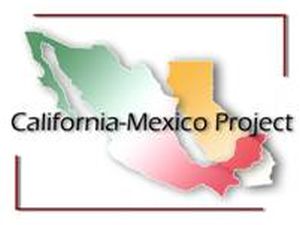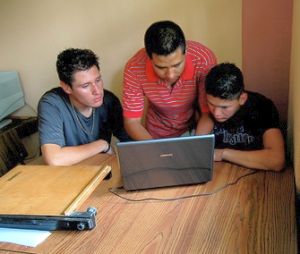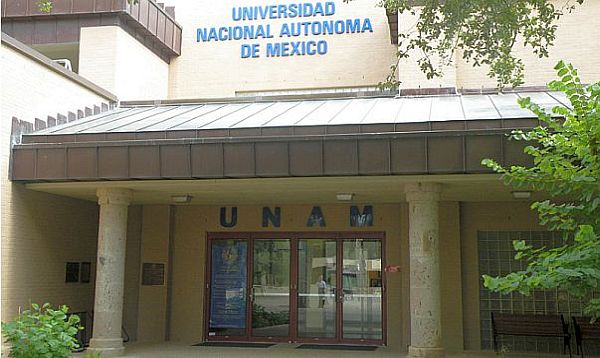Lynwood, California - In an ethnically themed shopping center called Plaza Mexico, just south of Los Angeles, California, a public university from the Mexican state of Colima has planted its flag.
Alongside the shopping center’s stores and taquerias, the Universidad de Colima offers mostly remedial education in reading, writing, and math to about 100 adult Mexican immigrants. But a handful of students here are also preparing to take their final exams for Mexican degrees, just one of several recent efforts by Mexican universities to branch into providing full-fledged university educations in the United States.
"It’s important for at least one university to pursue this," said Ana Uribe, a Universidad de Colima professor who runs the Lynwood branch. In fact, several Mexican universities are considering stepping in to offer accredited university classes in California and other states to serve primarily an immigrant population that lags far behind others in college education.
Nearly 34 million people in the United States identify themselves as Mexicans or of Mexican origin, but only a dismal five out of every 100 have university degrees, compared to about a third of immigrants in general, according to the Migration Policy Institute.
In California, 10 percent of Hispanic immigrants ages 25 and 26 have completed at least a two-year degree, compared to the state average of 36 percent, according to a report to be released later this year by the institute. Latino youth — both immigrants and those born in the United States — have the lowest rate of college attainment in California, researchers found.
Even those Hispanics who do enroll in American colleges and universities are 50 percent less likely than whites to earn a bachelor’s degree by age 24, the Pew Research Center reports. Many US universities, coping with competing demands for stretched resources, have been struggling to provide the kinds of support that could increase the number of Mexican-Americans who graduate.
In a survey released in January by Hart Public Opinion Research, 40 percent of Hispanics said the American higher-education system was meeting their needs only somewhat well or not well at all. Many Hispanic students are the first in their families to go to college, come from high schools in low-income areas that don’t necessarily prepare them well for advanced course work, and are disproportionately reluctant to borrow to pay tuition.
 |
Some Mexican universities, and their advocates, see an opening. Though most of the half dozen or so schools with US centers now offer little more than English, Spanish, and cultural classes, they’re eyeing greater prominence in the United States, and higher-level programs.
The Universidad de Guadalajara, for example, has set its sights on educating the millions of Californians from its home state of Jalisco. The university already offers a joint nursing degree in Los Angeles, but the partnership will end in October. The school is studying whether to offer independent degrees there in several subjects.
Educational barriers such as cost and language have made life in the United States difficult for many Jalisco natives, said Guillermo Arturo Gómez Mata, who directs the university’s foundation and is helping to guide its future in Los Angeles. He said there’s no timeline for when a decision about that will be made.
"We feel morally obliged to help them with their academic profiles," said Mata, adding that the school is also exploring US accreditation. "We are walking in the right direction, but we also know we have more work."
Other Mexican university leaders also noted the potential benefits their schools would offer immigrants.
"Is there a need? Yes," says Fernando León Garcia, president of Centro de Enseñanza Técnica y Superior, or CETYS, which has taken its first steps toward a campus or center near Sacramento, and which has already been accredited to operate in the United States. The university now educates about 300 San Diego area students at its Mexican campuses along the border, León Garcia said.
California, where public universities have been dealing with deep budget cuts and enrollment limits, will likely be the principal target of Mexican universities. There’s a huge market in the state, where Latinos now account for more than 52 percent of public school students, who will eventually be college-aged. A quarter of elementary-school students nationwide are Hispanic, Pew reports.
Several Mexican universities have already opened offices or started offering classes in California, including the Universidad Nacional Autónoma de México, or UNAM, which has a campus in Los Angeles in addition to one in San Antonio, Texas. And professors from Zacatecas have come to Cal State Long Beach in the past year to research and develop joint courses, the first steps toward broader academic programs north of the border.
Conversations between Mexican and US universities have increased to the point that US accreditors, knowing they will be asked to evaluate more Mexican schools soon, are working with their Mexican counterparts to find out more about higher education south of the border, said William Plater, who advises the Western Association of Schools and Colleges – the primary accreditor in the western United States – on international affairs.
 |
"We think it’s in our best interest to learn more about quality assurance," he said. The days of Mexican campuses in the US are just around the corner, some said.
"I don’t think it will be 5, 10, 20 years" before Mexican universities build campuses in the United States, said Jonathan Brown, a higher-education consultant who is working with CETYS as it decides whether or not to expand to Sacramento. "I think it will be sooner. In the next few years, California is going to be two million degrees short of what it needs. Who wouldn’t want to go to a first-rate Mexican university close to home?"
By international standards, "first-rate" universities are actually few and far between in Mexico; the UK-based Times Higher Education magazine rankings of the world’s 400 best universities includes just one, the flagship UNAM. But US accreditation could help some overcome their image problem. And language and cultural connections could give them an advantage in the American market.
Some are skeptical that Mexican universities have the potential to transcend educational barriers rooted in US immigration and social policies. A better way to narrow the achievement gap in California is to focus on providing remedial education to adult immigrants and better schools to younger ones, said Steve Boilard, director of the Center for California Studies at California State University in Sacramento.
"Maybe we need more adult education to teach basic skills," said Boilard, previously higher-education chief for California’s nonpartisan Legislative Analyst’s Office. "The answer isn’t necessarily to bring in foreign universities. Our public universities have an obligation to serve the population."
Barring that, however, at least some Mexican schools appear set on expanding their operations in the United States.
"It’s a huge opportunity for us," said Jake Pacheco, a spokesman for the nearly 70-year-old San Antonio campus of UNAM, which he said is in the process of getting its US accreditation with an eye toward vastly expanding its offerings from language classes to full-blown academic courses that would cater to the enormous market of Mexican immigrants who need a higher education.
Applying to college can be difficult under any circumstances, but language barriers and unfamiliarity with the American higher-education system compound those problems for Mexican-born applicants, said Yunuen Valenzuela, a Tucson, Arizona doctor who moved to the United States from Mexico 25 years ago, when he was 13.
"A lot of my peers didn’t feel they could go to school," he said, noting the voluminous, confusing paperwork involved in the admissions grind. "They felt like that whole process was too daunting. If Mexican universities advertise enough and target that population, I think a fair number of people would be interested."
Many Mexican immigrants would feel more comfortable applying to a Mexican university, Valenzuela said. He and other advocates are talking about legal immigrants. But Mexican universities also might appeal to some of the approximately six million undocumented Mexican immigrants in the United States and their children, many of whom are unable to afford US schools because of laws in most states banning them from receiving government financial aid.
 |
"These students who grew up here without papers might find it valuable," said Jehoan Espinoza, a 20-year-old student at the University of California, San Diego whose parents immigrated to California shortly before his birth. It remains to be seen, however, whether Mexican universities will be cheaper or offer more financial aid than US schools.
One of the Mexican schools’ strongest supporters in the United States is Armando Vazquez-Ramos, a professor of Chicano and Latino studies at California State University, Long Beach. Vazquez-Ramos runs the nonprofit California-Mexico Studies Center, which advocates for Mexican universities to come to the United States, and to expand their academic programs here.
"I am the Pied Piper," said Vazquez-Ramos, a pony-tailed, 64-year-old cauldron of energy who curses frequently to intensify his points. But even Vazquez-Ramos thinks Mexican institutions need to be smart about expanding north of the border. "You have to crawl before you can run," he said.
Mexican branch campuses could start by focusing on such subjects as agricultural science or water engineering—job skills Vazquez-Ramos said immigrants need. He and others also said the Mexican universities could offer joint degrees with US partners.
The Mexican institutions should consider pairing technical education, such as carpentry, with English instruction to make their programs more practical for immigrants, said Sarah Hooker, a policy analyst at the Migration Policy Institute. Such programs have been effective at US community colleges, Hooker said.
But Spanish-speaking immigrants often skip college because of the language barrier, she said. "There have definitely been indications that college campuses can be pretty intimidating for immigrants. It’s possible, if classes are being offered by a Mexican institution, it might be easier for immigrants to navigate."



